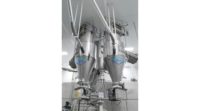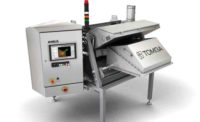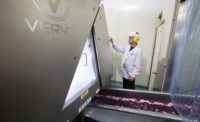Now that the economy is steadily improving, many bakers and snack manufacturers are beginning to invest in new facilities, plant upgrades, production lines and equipment. Changing consumer trends, stricter sanitation regulations, rising energy and ingredient costs and a host of other factors are prompting them to make long-delayed capital investments.
“We have seen a fairly dramatic increase in spending on plants in general and on ingredient-handling systems in particular,” says Bill Kearns, vice president, engineering, at The Fred D. Pfening Co., Columbus, Ohio. “Marketing [or commercializing] new products is most commonly the driving force, but we are also seeing significant plant consolidation, where older, less-efficient facilities are being phased out, and production is moved to new lines in more modern plants. Sanitation considerations have moved to the forefront, with washdown requirements becoming more common and use of stainless steel almost ubiquitous.”
James Toole, product manager-bulk handling systems at KB Systems Inc. in Bangor, Pa., concurs. “At the end of last year, I saw a really heavy push for new, full systems,” he says. “At the beginning of [2013], I never would have predicted that the year would have ended like that.”
Owned by Gemini Bakery Equipment Co., KB Systems offers custom-designed systems for specialty bakers—industrial ovens, dough-processing lines and bulk-ingredient systems, such as indoor and outdoor flour and sugar storage systems and bulk-handling equipment. The latter category includes blowers, sifters, weigh hoppers and Super Sack unloaders and bag-dump stations.
Easing the load
“We’ve noticed in the past few years that the demand for specialty ingredients like whole wheat has been dramatically increasing,” says Toole.
“We’ve seen capacities go up, but in most cases not enough [for bakers] to justify using large silos,” he continues. “So, we’ve been developing a combination recirculating
bag-dump/Super Sack station setup that is flexible enough to dump bags as a starter system, but can be retrofitted with a Super Sack as usage increases.
“We now have a flexible, modular design that can be added to an existing closed-loop system and recirculate ingredients directly back to the bag dump/Super Sack station. This turns the bag dump/Super Sack station into a mini storage bin.”
KB Systems has been offering its large bulk storage indoor and outdoor flour and sugar bins for the past 30 years. The new modular, flexible bag dump/Super Sack systems have been received positively in the industry where cost savings for high-usage minor ingredients like whole wheat can’t quite justify the expense of a large storage bin. “We simply add the bag dump/Super Sack station in line with existing conveying systems and either convey with a single-pass or closed-loop configuration,” Toole says.
“If bakers see their whole-wheat usage increasing within the next couple of years, this system is a good place to start,” he continues. “We can install a complete closed-loop bag dump station. As whole wheat usage increases, a Super Sack station can be easily added onto the hopper to extend capacity.”
Like the larger bulk systems, the bag-dump/Super Sack station also eliminates the need for bakers to bring pallets and bags onto the production floor. The bag-dump station reduces production floor labor requirements and reduces the potential for production floor injuries. As a result, the Super Sack retrofit offers a cost-effective solution for potential bulk-usage cost savings, Toole says.
Bulking up
The Fred D. Pfening Co. manufactures a variety of baking equipment, including pneumatic ingredient-conveying systems, pneumatic minor/micro ingredient systems, high-speed mixers, proof boxes, liquid meters and retarding and fermentation rooms.
Its bulk bag unloaders continue to be used in new, labor-saving ways in both minor and midrange ingredient applications, says Kearns. “Bulk bag unloaders fitted with small screw feeders arrayed around a central scale hopper are being used to eliminate manual weighout of many minor ingredients,” he says. “Usually one such array can serve multiple mixers with considerable savings in labor by reducing everything from fork truck usage to sanitation clean-up hours.”
In addition, bakers are using bulk bag unloaders that feed directly into conveying lines to deliver midrange ingredients. “They batch relatively large amounts of specialty flours, sugars or mixes in place of either underutilized bulk silos or labor-intensive bag dump operations,” he explains, adding that they have the advantage of easy changeover to different ingredients.
Bakers are also using Pfening’s bulk bag unloaders as standalone batching systems by incorporating either a scale hopper or loss-in-weight loadcells. “Loss-in-weight systems are appropriate for batching larger amounts,” Kearns says. “Incorporating a scale hopper into the bulk bag unloader works better for smaller amounts.” A standalone system can feed into a pressure or vacuum pneumatic line, a mechanical conveyor or a gravity drop into a container.
The company’s latest introduction, which was on display at the International Baking Industry Exposition (IBIE) in October, is the EBM Enviro-Blender, an automatic water-dispensing system with volume and temperature control. “Folks tend to exclude liquids when thinking of ‘ingredient handling,’” says Kearns. “Bags and skids come to mind first, but water is critical almost everywhere, both [in terms of] temperature and volume. I think more folks are dealing with water-batching issues than with some of the dry [ingredients].”
The EBM Enviro-Blender automatically batches water at a controlled temperature. Temperature is controlled by a modulating, proportional valve that blends hot water, ice (chilled) water and municipal water. The water temperature is continuously adjusted during the draw, so the final batch temperature is exactly what’s specified. Water volume is monitored by a high-resolution industrial meter rated for use up to 190 deg. F. The package includes all valves, regulators and sensors to make a complete unit. Simply install, run the water lines to the inlets and pipe the outlet to the mixer.
Standard control is by a small, touchscreen programmable logic controller (PLC) mounted in a stainless-steel enclosure. The unit can also be incorporated into a central control system.
“Ingredient water temperature and volume is critical in the manufacture of many food products,” says Kearns. “Water temperature and volume affect the dough or batter properties, which in turn affect the performance of all downstream equipment and ultimately the final product.”
A complete solution
Zeppelin Systems USA, Odessa, Fla., which manufactures industrial storage, conveying, blending and bulk-solids dosing equipment, introduced a complete solution for the baking industry at the end of 2013, according to Stephen Marquardt, sales director—food. The company developed the system in response to customers wanting to be able to produce a continuous frozen wheat dough without adding any ice or carbon dioxide (CO2 ) and to achieve a final dough temperature of less 70 deg. F. It also sought to address customer requests for increased line efficiency and energy, raw material and labor cost savings.
The new bulk material-handling system features storage silos, a preweighing system, a yeast slurry makeup system, a minor ingredient handling system and a continuous mixing system featuring the company’s patented Codos technology, which ensures consistent dough quality anytime. It also incorporates an automated “0” dough system called the autolyse method.
“An autolyse period gives the flour time to soak up all the moisture, resulting in more orderly gluten formation,” Marquardt explains, adding that the resulting dough is easier to handle before it’s baked, and the end product tastes and looks better and has a better texture and shelf life.
“Keeping frozen dough at a low temperature before the freezing process is very important to minimize the yeast activity. In combination with our Codos mixer, which produces one-fourth less temperature increase during mixing and kneading than a conventional mixer, and the autolyse method, we were able to control and achieve our customers’ demand without adding any ice or CO2 [to frozen wheat dough].”
Buying guidelines
As when investing in any new equipment, bakers and snack manufacturers should consider a variety of factors when selecting ingredient-handling equipment that best meets their needs. Kearns recommends that they consider whether the equipment will work as advertised, their operators will be able to use it, their sanitation workers will be able to keep it clean and their maintenance staff will be able to maintain it. And, of course, they should ask themselves what the payback will be.
Marquardt suggests bakers and snack producers consider energy and raw materials costs savings, increased line efficiency and ease of sanitation and changeovers when selecting an ingredient-handling system.
Bakers and snack producers in the market for new ingredient-handling equipment will find that today’s systems do more than just handle ingredients—they can help them “get a handle” on ingredient and energy costs, sanitation and a host of other production factors. SF&WB







